

User Manual
Getting started (quick start-manual)
Suite Gear
Amplifiers
Cabinets
IR loader LoadIR module
Pedals and Studio Effects
Credits
Getting started (quick start-manual)
Presets
Amp Room factory presets are your friend for both quickly learning how Amp Room works and for finding great sounds fast. You can find factory and User presets both here:
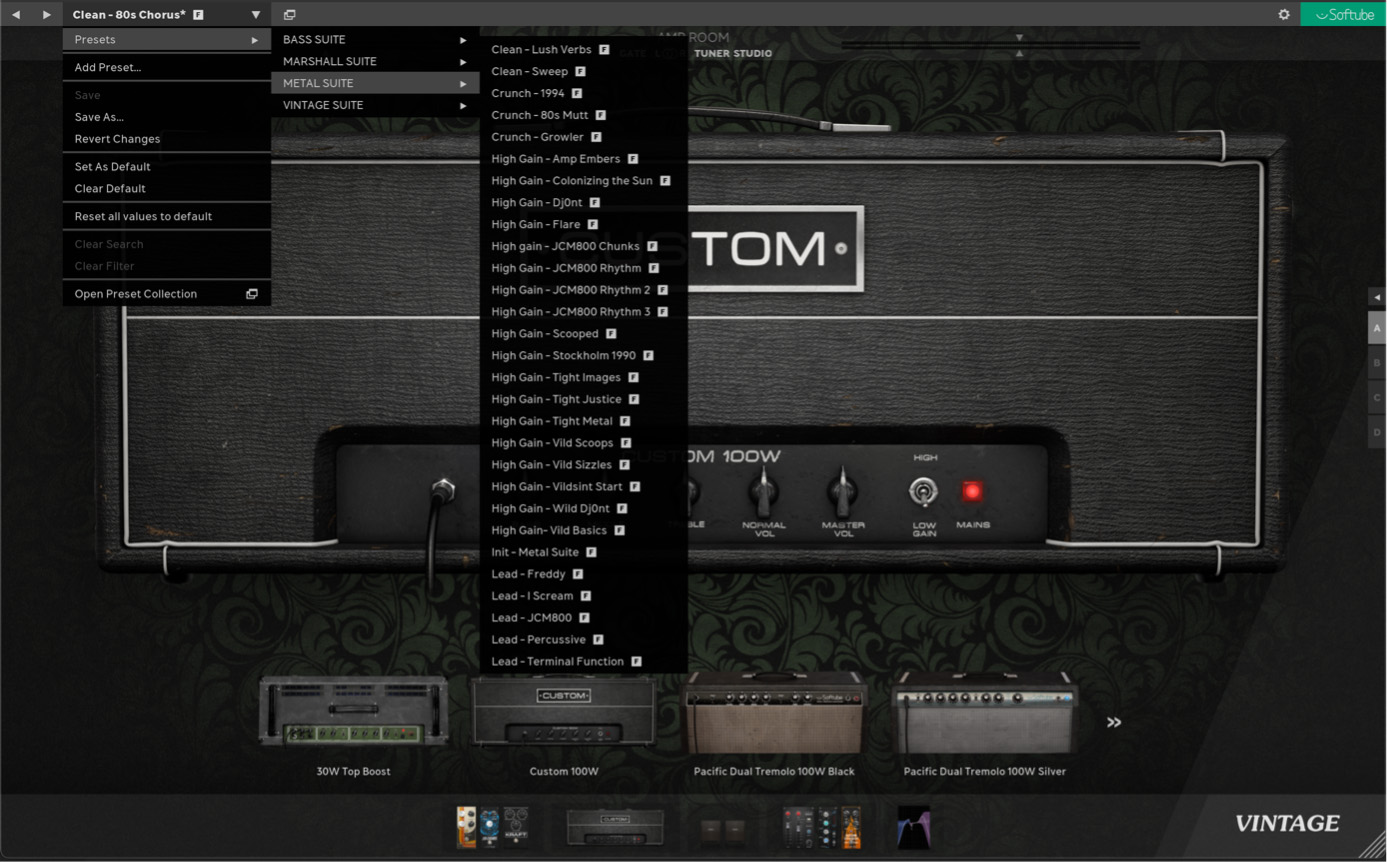
And here. This will open Preset Collection in a pop-up window. See the Preset Collection manual for more information.
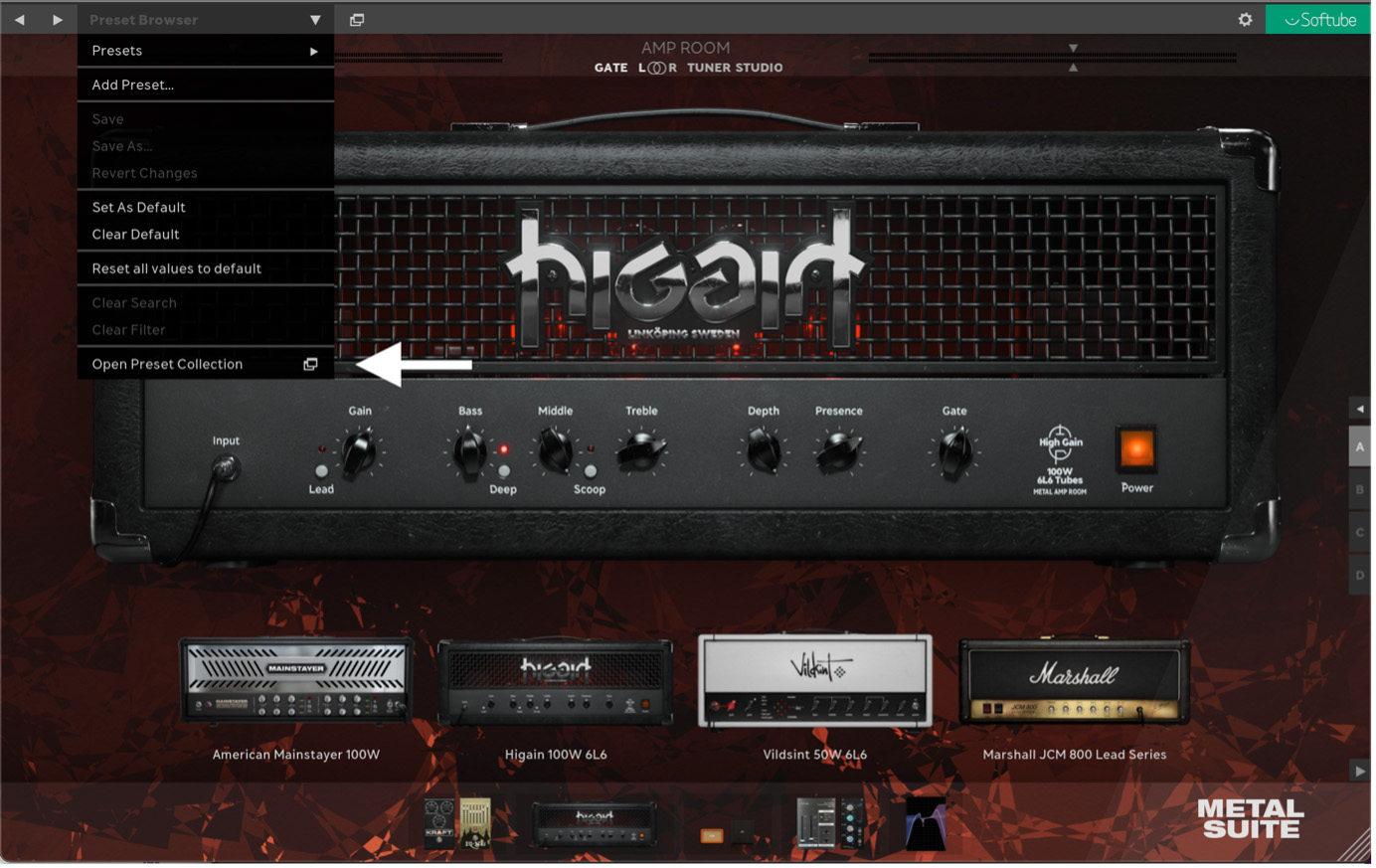
Switching between Suites
If you own more than one Amp Room Suite, you can switch between Suites by clicking on the Suite selector and selecting another Suite in the list. Choosing a preset from another Suite will automatically switch Amp Room to the Suite where the preset belongs.
The currently loaded Suite (see arrow) is activated on mouse-over. To deactivate this mouse-over pop-up, see “Settings” (cog wheel, top right corner).

Note: all current signal chain progress will be lost when switching to another Suite/preset.
When loading a Suite, only the content that comes with it will show in the amp and cab section. If you own multiple suites, you can always access content from other suites by clicking the "Show all" button in the amp and cab section. Click again to hide non-suite specific content. The pedal and effects sections always show everything.
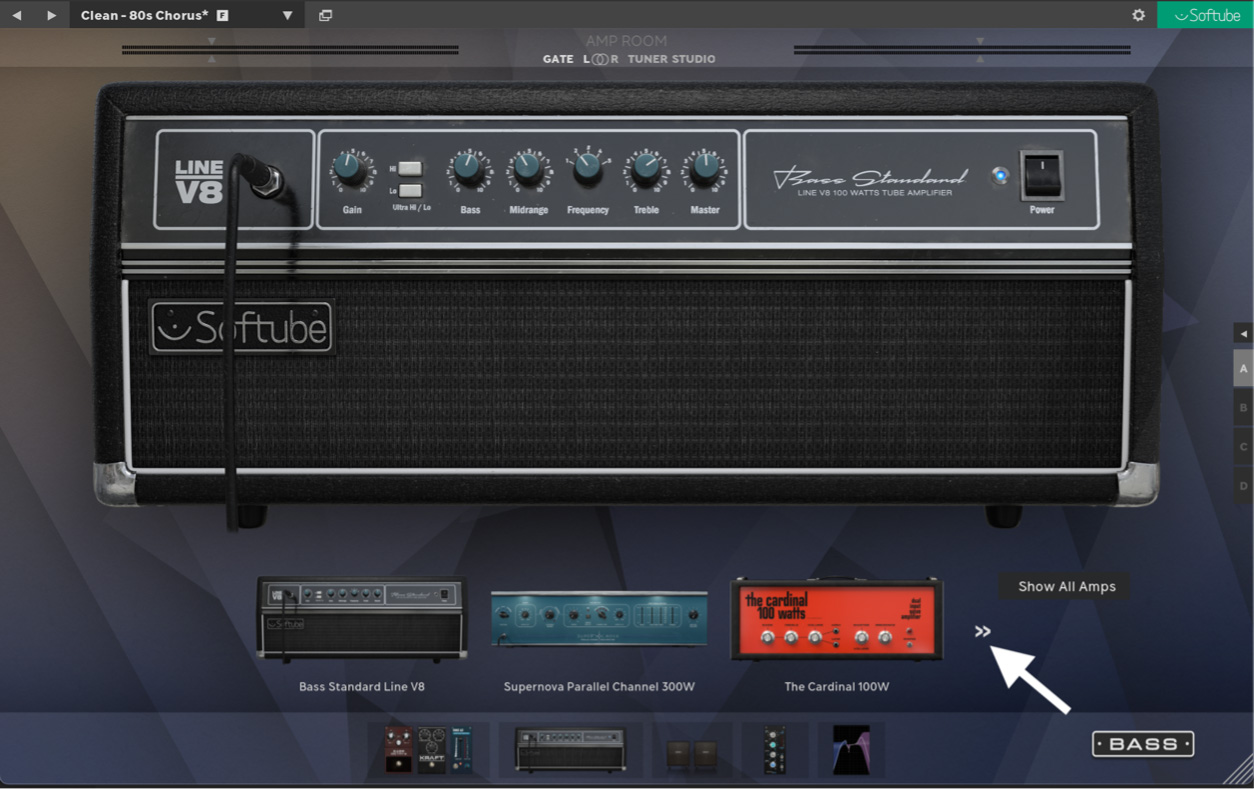
This concludes the Suite Quick Start manual over Amp Room. We strongly recommend that you also check out the main Amp Room manual for information on Studio mode and all the over features and functions of Amp Room.
Note: Apart from the gear that is included in the Suite, all Amp Room Ready Softube products that you own will also be accessible automatically inside Amp Room. For a complete list of Amp Room Ready plugins, please see the Amp Room Ecosystem page.
Marshall Plexi Super Lead 1959
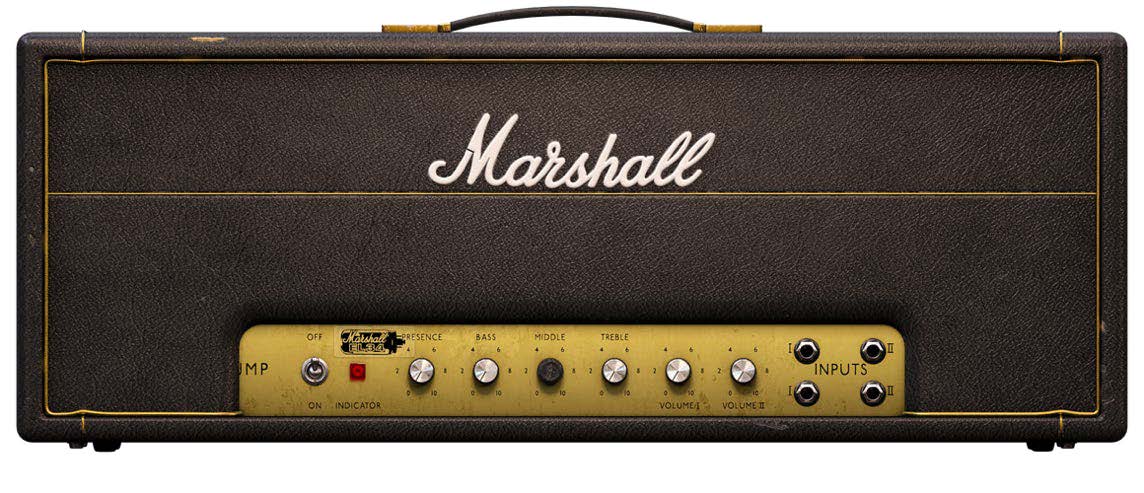
The 100-watt Marshall 1959 Super Lead, commonly referred to as the Plexi, is the most legendary guitar amplifier of them all and its long list of users makes up a “who’s who” of rock ‘n’ roll history. Softube worked closely with Marshall’s product experts to ensure that the Plexi was modeled in the best possible manner. The result is the amp.
The particular amplifier that Softube modeled is not just any Marshall Plexi. In the making of this plugin, Softube had the aid of Marshall’s product expert Chris George, who lent us this amp for Marshall’s own “museum” (not open to the public): This very amp, built in 1967 and kept in pristine shape (at least on the inside) by Marshall’s technical staff, is Marshall’s own reference to how a Plexi should sound.
Marshall Bluesbreaker 1962
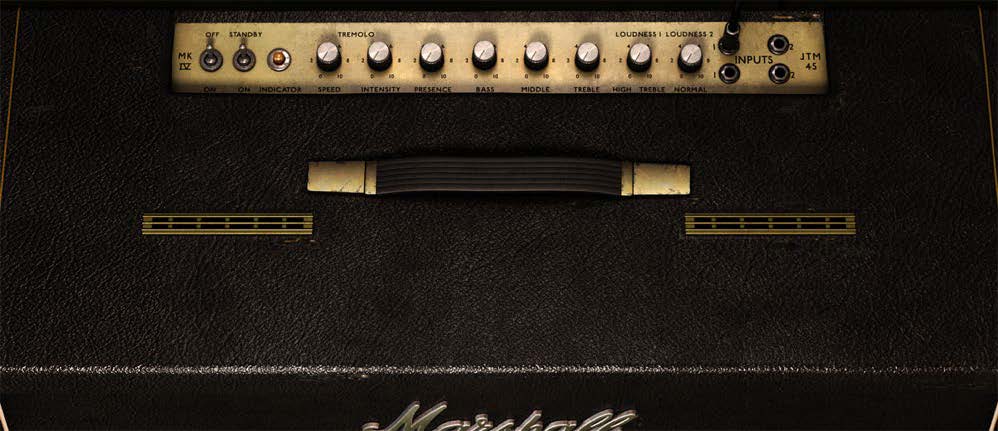
Guitarist lore will have it that the idea for the Bluesbreaker came from Eric Clapton himself, as he wanted an amplifier that could fit in the trunk of his car. This myth has however since been debunked.
A more likely reason for the Bluesbreaker to be conceived was the Jim Marshall simply want an amp that could compete with the very popular Vox AC30, which was also a combo amplifier with a 2x12 speaker configuration. Enjoy legendary blues tones from the GZ34 tube rectifier (similar to the JTM45), also modelled on Marshall’s own reference Bluesbreaker 1962!
Marshall JMP 2203
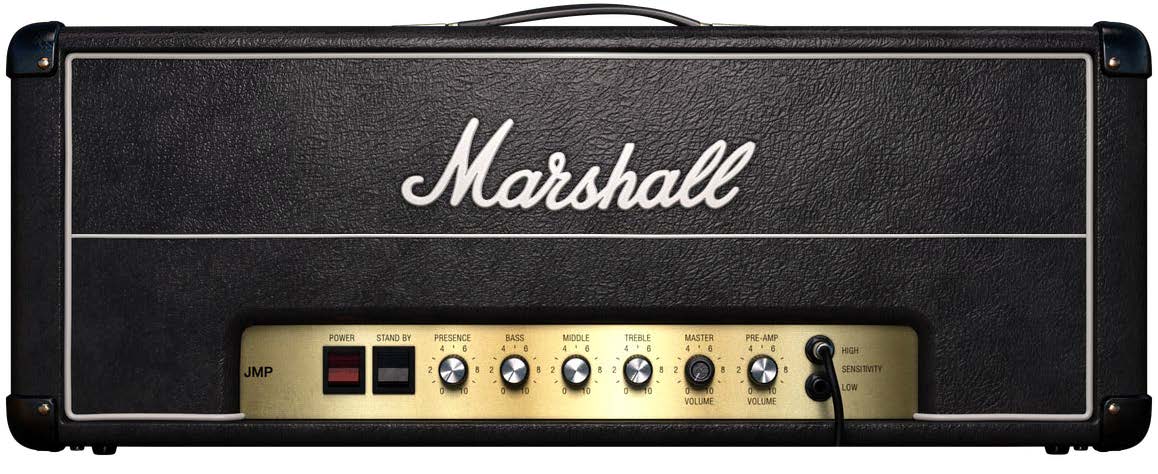
When Marshall JMP 2203 was introduced in 1975, it didn’t only take over the Plexi’s place as the mainstay of the Marshall amp range. It became the amp that all other rock guitar amps are gauged against.
Also the case with the creation of this modeled amplifier, the Marshall JMP 2203 head used comes from Marshall’s reference museum. This particular amp was built in 1977 and it’s the one Marshall themselves use to define the true 2203 sound with.
Marshall Silver Jubilee 2555
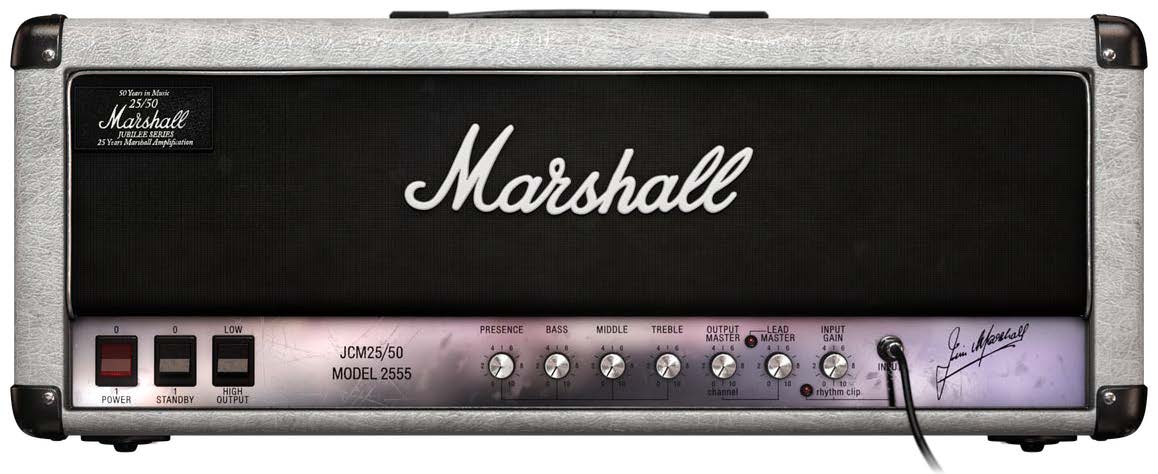
The Silver Jubilee was based on the Marshall JCM800 amplifier but had an innovative and unusual preamp section which offered higher gain and a somewhat darker and smoother sound compared to the JCM800. The preamp circuit had three gain modes: Clean, Rhythm and Lead.
The EQ section also set the Silver Jubilee apart from other Marshall amps with its much wider range of tonal variety, and it was the first Marshall amplifier where the power amp tubes could be switched from their normal pentode operation mode into triode mode. With the power amp tubes working as triodes, the power amp’s output was cut in half, and the power amp distortion was silkier and less aggressive. Get ready to rock out with the sounds modeled on Marshall’s Silver Jubilee 2555 reference amplifier!
Marshall JCM800 Lead Series

Nothing embodies the essence of the Marshall tone more than the classic JCM800 and, being modeled on Marshall’s reference JCM800 amp, nothing stands between you and the sounds of the greats with this amplifier. Introduced in 1981. It was the second Marshall amp that featured a master volume control, which allows you to further sculpt the tone. With preamp on full and a low master volume, you’ll get a tight overdriven sound, while the opposite setting gives you a looser and more vintage sounding distortion.
The JCM in the name stands for James Charles Marshall, and the seemingly meaningless number 800 was taken from his license plate. Later, it was said to represent the decade (the 1980’s).
The tone stack Bass, Middle, Treble, and Presence controls will behave quite differently depending on your Master Volume setting, and the Pre-Amp volume will also change tonality depending on its setting. While the amp seems simple at first glance, there’s more to it than meets the eye.
Marshall 1960TV 4x12
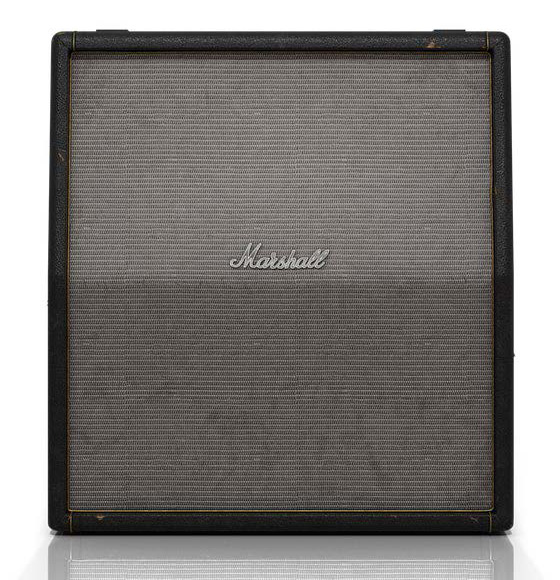
The Marshall 1960TV is taller than an average 1960 (TV = Tall Vintage), giving it a lower mid-range response. This is sometimes desired when looking for that heavy, thick blues tone.
Speaker: Celestion G12M-25 Greenback
Marshall Bluesbreaker 2x12

This cabinet being of course the classic Marshall Bluesbreaker 2x12 combo. Loaded with the massive, bluesy low-end.
Speaker: 1964 Celestion T650 Alnico
Marshall Basketweave '68 4x12e

This cab is really hard to come by these days, which is why we’re very glad to have found one to make available in Amp Room. The Marshall Basketweave ’68 with its Celestion G12H-30 T1281 speakers was the preferred choice of players like Hendrix, Jimmy Page and Yngwie Malmsteen (J Malmsteen by the way). Smooth and less harsh sounds than smaller magnet speakers.
Speaker: Celestion G12H-30 T1281
Marshall 2551AV 4x12
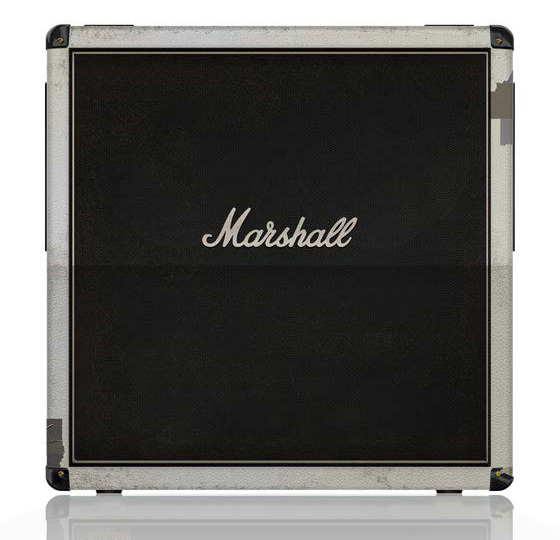
The Marshall 2551AV cabinet is of course part of the Marshall Silver Jubilee series. Equipped with four Vintage 30s, it was the first Marshall cabinet to ever use that type of speakers.
Speaker: Celestion G12 Vintage
Marshall JCM800 Lead 4x12

It is impossible to exaggerate the importance and impact of the Marshall 1960 Lead cabinet. Apart from being the #1 cab choice of the NWOBHM movement, it's slightly scooped mids and well- rounded lows will do an excellent job with whatever you choose to throw at it.
Speaker: Celestion G12T-75
Marshall Cabinet Collection
Marshall 1960AX 4x12

Get a great mid-range punch along with beautifully detailed highs with this G12M-25 powered 100W cab. With less headroom, the speakers gently break up the sound, giving the overdrive more depth.
Speaker: Celestion G12M-25 Greenback
Marshall 1960B 4x12
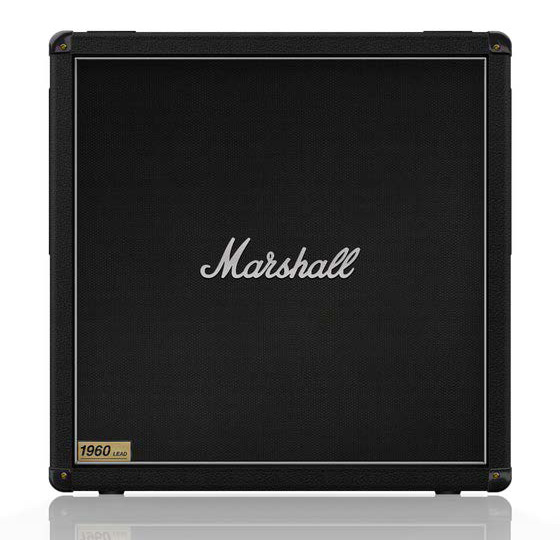
It doesn't get much more classic than this: a straight 1960 in black tolex. Most will be familiar with its 300W sound.
Speaker: Celestion G12T-75
Marshall 1960BV 4x12
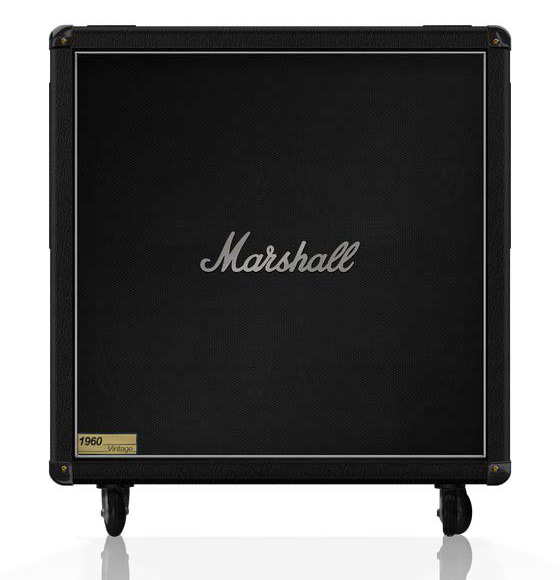
This 280W 1960 vintage cab is a combination of the enclosure of the 1960 cab and the vintage aural characteristics of a 1982 cab. Armed with four G12 Vintage speakers, it gives a warmer tone than its predecessor. Offers both a well-rounded high-end punch to a low-end thump.
Speaker: Celestion G12 Vintage
Marshall 1960HW 4x12
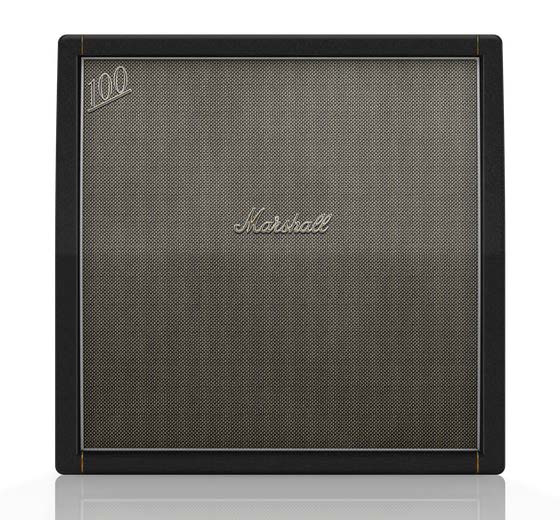
Want that total 60s experience? Why not for this hand-wired retro-sounding 120W cab? Four G12H-30 speakers offer a tight low-end, great mid-range tone and stunning highs. Also comes well-recommended for modern high-gain use for those who are so inclined.
Speaker G12H-30
Marshall 1936 2x12
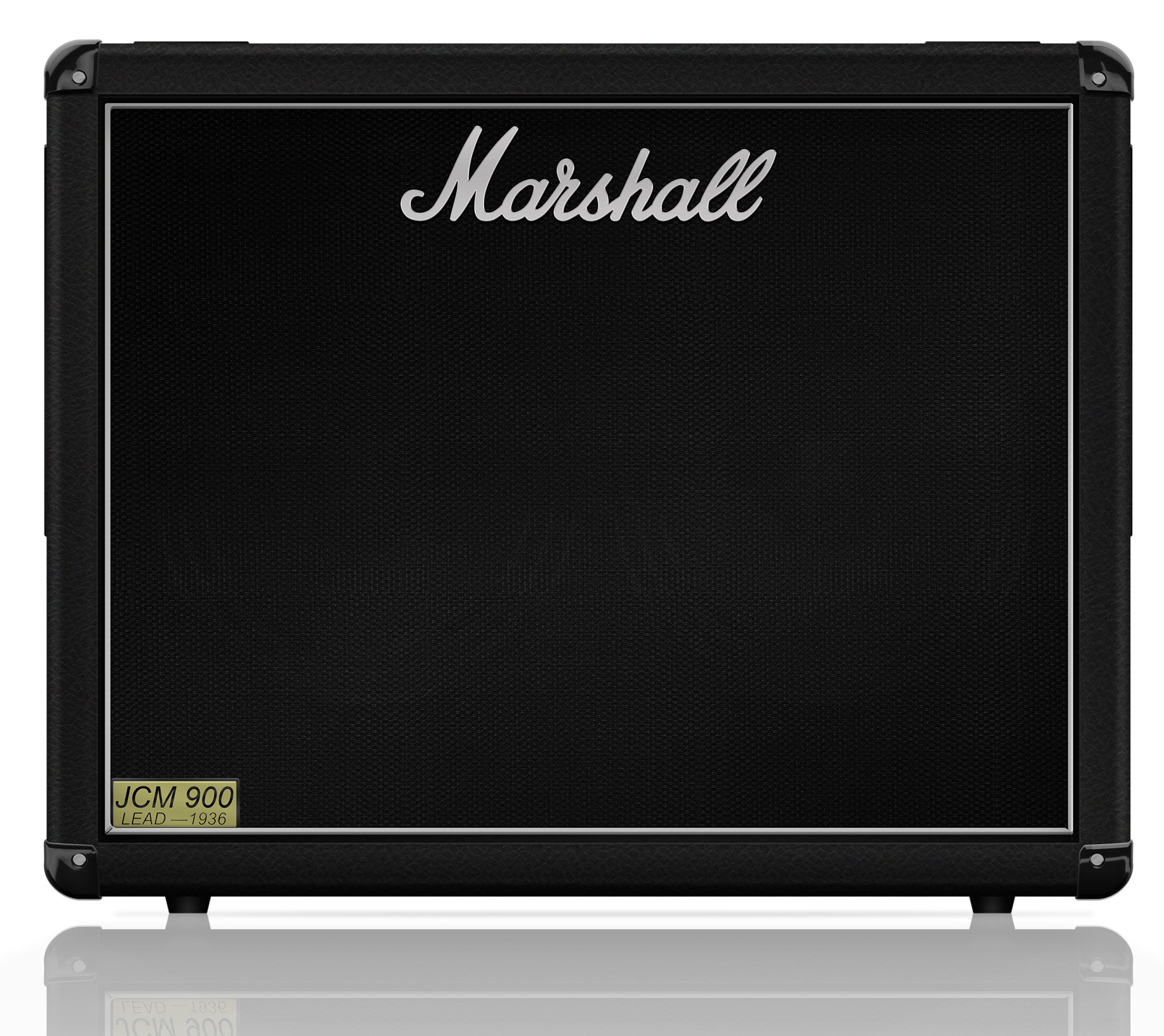
This is a 150W gem, fitted with two G12T-75 speakers, delivers a softened high-end response for higher gain tones.
Speaker: Celestion G12T-75
Marshall 1936V 2x12
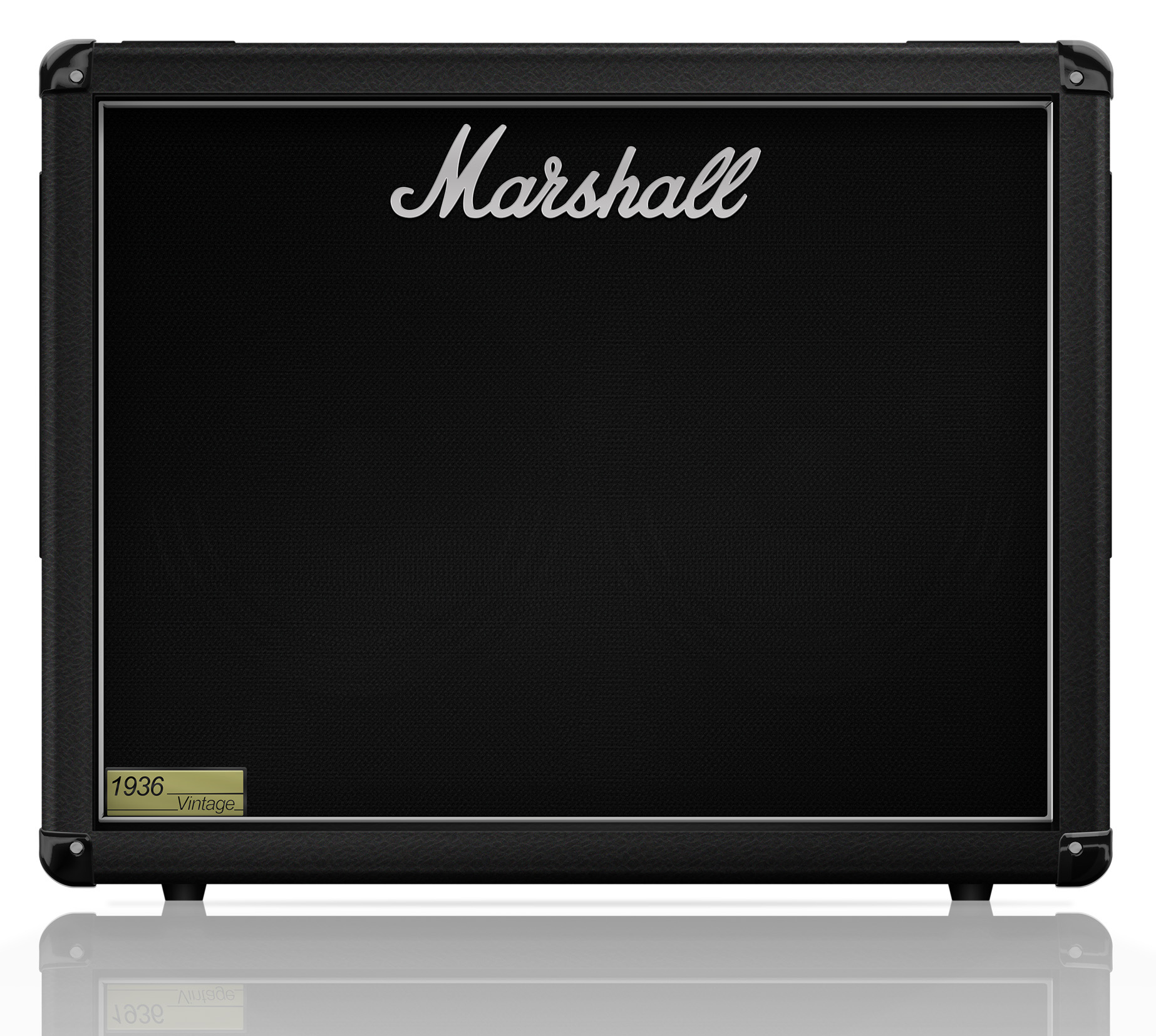
Two G12 Vintage speakers help deliver a 140W classic Marshall tone out of this cab. Great not only for achieving those old rich tones, but also when wanting modern edge and bite.
Speaker Celestion G12 Vintage
Marshall 1974CX 1x12
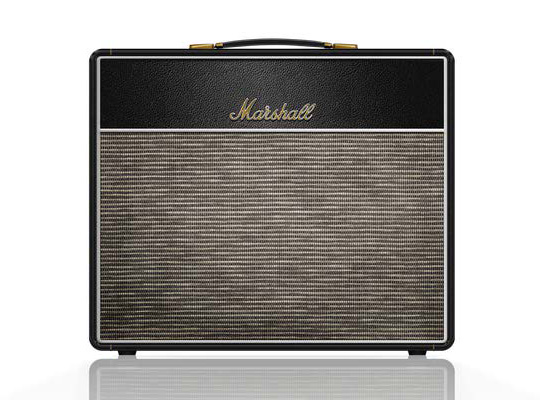
A hand-soldered 20W cabinet, loaded with a single 12" G12M-20 Greenback. Straight out of the 60s, but you will be surprised at how well it adapts to modern demands.
Speaker: Celestion G12M-20 Greenback
Marshall 1912 1x12
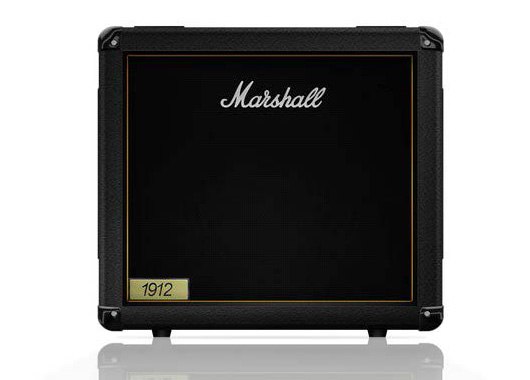
Don't be fooled by its small size. This 1x12" packs 150W punch thanks to the G12B-150 speaker it is armed with. Works just as great for bass as it does for guitar, thanks to its richness of the lower frequencies.
Speaker: Celestion G12B-150
LoadIR
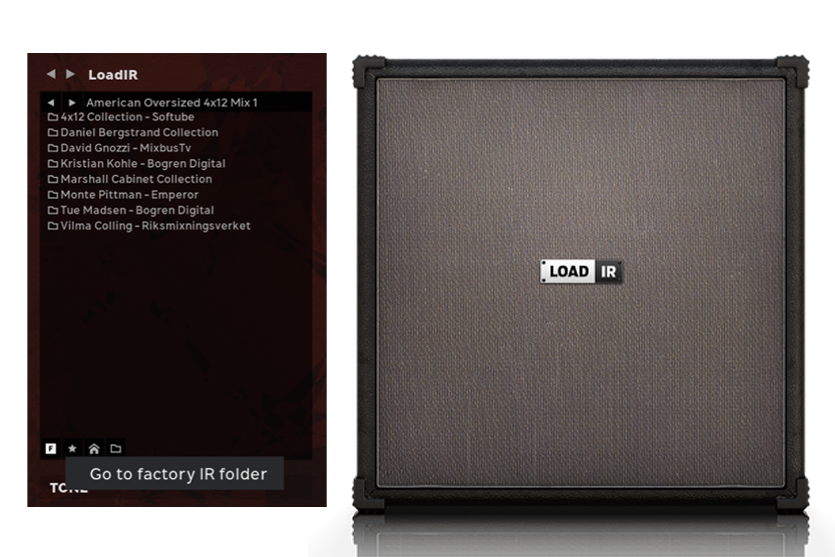
Load your own impulse responses (IRs) to create a totally customized signal chain. Any .wav file of standard sample rates and regardless of length can be uploaded into LoadIR, however only max 1 second, counting from the start, will be used.
Click the F (for Factory presets)-button to access the included Producer IR Packs and much more.
Included in the cabinet section is the IR loader module LoadIR. Locate it by clicking “Show All Cabs” in the cabinet section and looking last (far right) in the cabinet Gear menu.
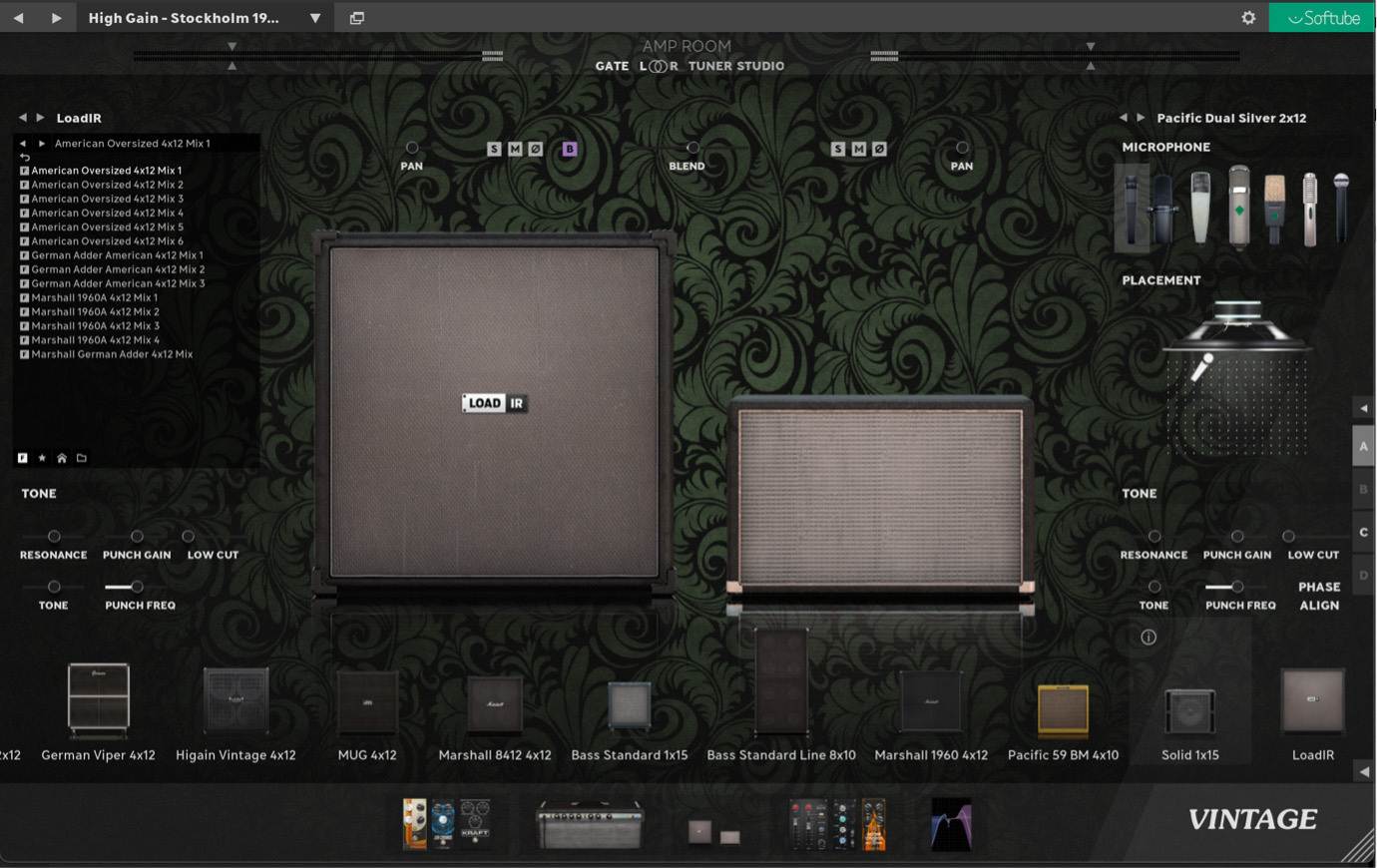
Microphone selection and positioning is not available for IRs, but the Tone controls are.
Step through the IRs by either the arrows next to the IR file name or by clicking directly in the drop-down list.
Clicking on the F icon at the bottom of the IR selection window will take you to the factory included IR folders. Click on a folder to access it. Click on the curved arrow to take you one step higher in folder hierarchy.

Every IR has two options to it.
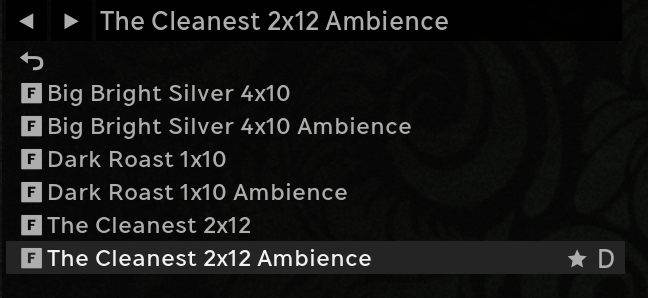
Clicking the star will add the IR to your favorites folder. Clicking the D will set the IR as the default IR when using the LoadIR module.
Access your favorites folder by clicking the star icon at the bottom of the IR selector window. Remove an IR from your favorites folder by clicking the IR’s star when in the favorites folder.

If you have your own IR library, access the OS browser by clicking the folder icon at the bottom of the IR selector window. Navigate through your HD and select an IR. The selected IR, along with all/any other IRs in the folder, will appear in the IR selector window. Step through them as you would with the factory IRs.

When a User IR is loaded and the OS folder is shown in the LoadIR display, alt/option + click the home icon to set the current OS folder as your home folder.
In the Settings menu (cog wheel icon, top right corner) there are two options that concern LoadIR. Normalizing non-factory IRs is to safeguard against third party IRs that might be harmfully loud. Automatically phase aligning third party IRs with Amp Room cabinets and IRs is for safeguarding against getting unwanted artifacts, such as phasing. Both can be unchecked but should be done so with care and at own risk.

An inserted IR will be saved along with the DAW project. Meaning, if the project is moved to another computer that does not have the selected IR locally LoadIR will still contain this IR and the signal chain will play as intended.
Saving a preset where LoadIR is used to Preset Collection will also save the IR to the preset.
The IR loader LoadIR supports .wav files in 16/24/32 bit (so basically any bit depth and in all sample rates (44.1, 48, 96, 176.4 and 192 kHz) up to 1 second for both mono and stereo IRs. If you choose to load a longer .wav file just for the heck of it, LoadIR will automatically introduce a fade after 0.8 seconds to comply with the 1 second length limitation.
Marshall The Guv’nor overdrive
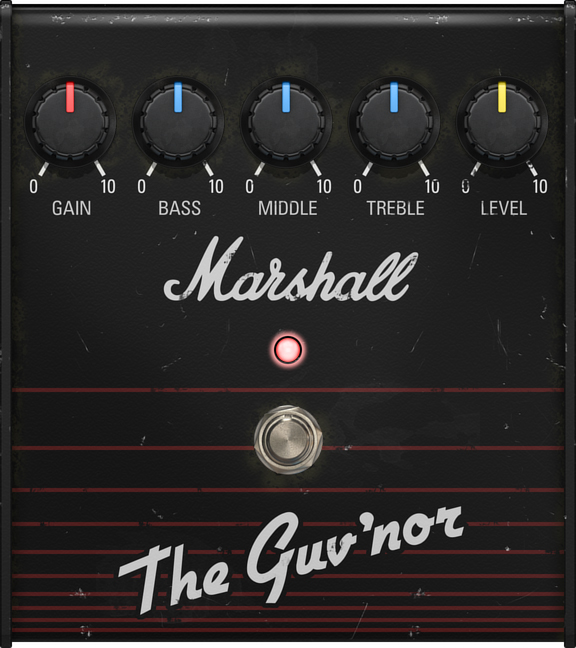
The pedal modeled here was introduced in the 1980s and provided a method for obtaining the classic Marshall sound without buying a Marshall amplifier. It recreates the drive tones of the JCM800 and Plexi amps with its heavy, distorted tones. It’s also flexible enough to move from transparent overdrives to heavily saturated lead tones and further into huge, distorted JCM grunt.
Gain provides drive, no doubt about that. The three Bass, Middle, and Treble controls allow you to sculpt your sound, while the Level knob sets the overall output volume.
Softube Tube overdrive
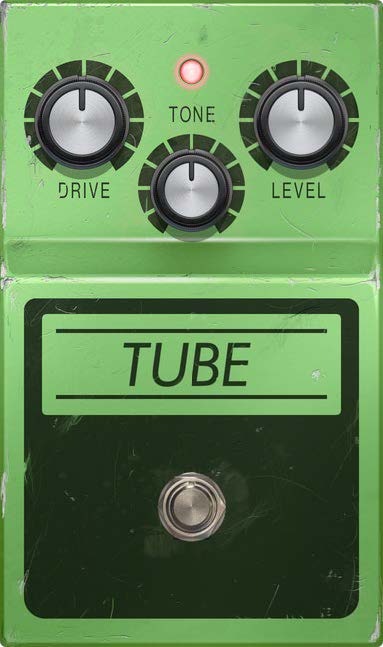
Distortion probably doesn’t get any more classic than this unit. You could call Tube overdrive the mother of all distorted sounds. This overdrive pedal, with its tube-like characteristics, can be useful when your amplifier isn’t heavy enough. The mid boost provided here is typically popular among rock and blues guitarists. The Tube overdrive can even be used to mimic the sound of a vintage tube amplifier all by itself.
Operation is simple. Adjust the Drive knob for the right amount of dirt, use the Tone knob to set the treble content and let Level balance the overall output volume of the pedal.
Softube Filbyter fuzz
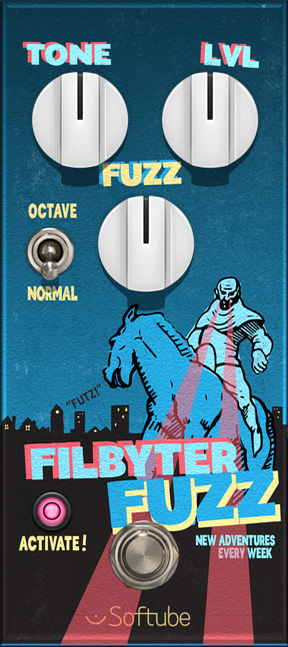
Love it or hate it, fuzz undeniably has played a huge roll throughout music history. Being one of the earliest forms of shaping a guitar tone, it might seem like a dated sound to some. But fuzz is in fact a very useful tool in creating warmth, character and atmosphere.
Since there are so many different areas where fuzz can be added for great effect, the recommendation is to just tweak it until you find the sweet spot for what you want to achieve. Activating the octave-setting will however make the fuzz a bit more extreme. A tip is to turn the fuzz knob all the way down and it can be used as an amp on its own! Getting warm and fuzzy with the Filbyter Fuzz is easy.
Apart from being a probable historical figure one thousand years ago in the Linköping area, Folke Filbyter is also a statue in the city’s main square.
Softube Lion Head vibrato
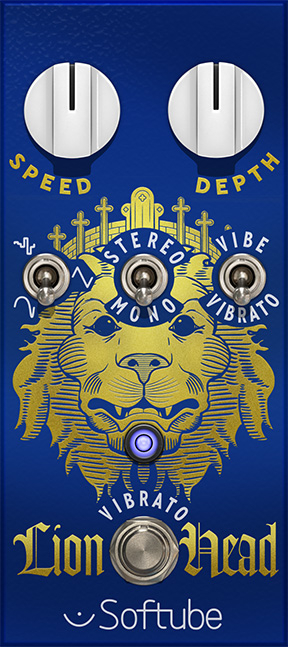
Try placing the Lion Head pedal after a cleanish amp, use the Random waveform setting and be gentle with Speed and Depth to add some dimension to your sound. Or place it after a dirty amp and play around with the Vibe mode and Multisine waveform setting to bring back memories from the past. Alternatively, dial up the Speed and Depth to max and enter the experimental zone!
Don’t forget to try out the Stereo setting either. But do so on your own risk! This pleasant effect might keep you busy long after your intended bedtime.
A lion’s head is the Linköping city coat of arms and is a frequent symbol of the local sports teams.
Softube ODR overdrive
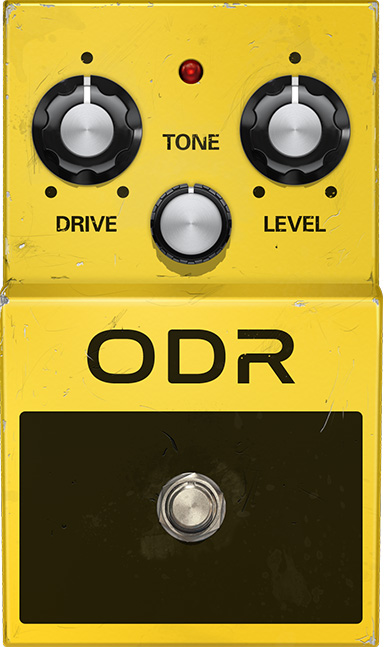
The classic dual-stage overdrive circuit modeled in this pedal offers loads of sustain and compression, while preserving the dynamics of the input sound in a great way. If non-muffled, dynamic tones reminiscent of overdriven tube amps is what you want, the ODR overdrive is your choice.
You could try out different settings on this pedal. Drive can be set very low as a rather clean booster or higher for increased grit and compression, perfect for crunch and lead sounds. The Tone knob is vital for taming the overdrive effect and adjusting the overall character. Level takes care of the output volume.
Softube Brask boost
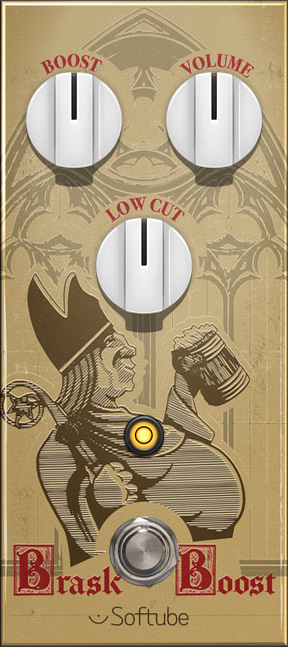
Boosting treble frequencies was the standard practice throughout the 60s and 70s to achieve a more aggressive sound. Dial the volume knob on the guitar back a bit and there is a world of sweet tones to discover!
Brask, an early 1500s bishop of Linköping diocese, avoided execution at the Stockholm Bloodbath through a hidden note which later coined the common Swedish proverb "Brasklapp"
Softube Doom Chvrch reverb
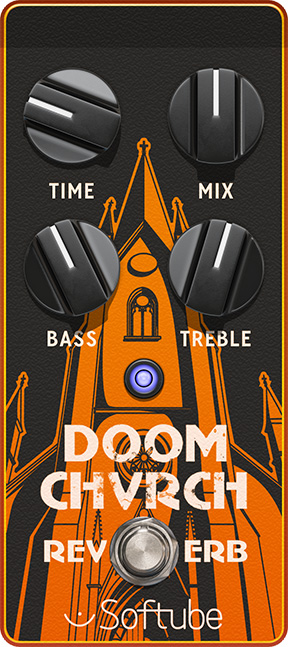
The Doom Chvrch reverb is a marriage between vintage and modern. Some parts, such as the modulation and diffusion, are inspired by the classic EMT 250 reverb, while the reverb tank itself comes from the huge hall we built for the Parallels® instrument. It was designed to allow you to go from a short “boxy” room sound, to epic and almost infinite perturbations that evolve over time into something completely different. It was never intended to sound realistic; it was designed to sound good.
Doom Chvrch is a stereo reverb that will give you a stereo output, even if the input is a mono signal. You can therefore use it in subtle amounts to give some depth to your track. The Time knob provides almost infinite reverberation. Mix adjusts the dry/wet balance and the Bass and Treble controls let you adjust the overall tone of the reverb effect.
“Doom Chvrch” is a local wordplay on the Domkyrka (Cathedral) of Linköping. Founded in the 13th century, it is a prominent part of the Linköping skyline.
Softube Wildboar delay

Delay or echo is one of the most desirable and necessary effects for many musicians, not only synth players, singers, and guitarists. When introduced in the fifties, tape effect units provided a method of adding space around singers and made instruments sound more exciting. Later it became a way of adding rhythmic effects in musical arrangements.
Delay sets a delay time from 20 to 1,000 ms. The Mix knob goes from completely dry to 50/50 (at 12 o’clock) to delay only. Feedback gives you anything from a single delay to almost infinity, and the repeats continue even after you turn the pedal off. If you want to quickly cut off the echoes, just turn down the Feedback knob. Tone does not affect the delay signal at all when set to 12 o’clock. Move it to the left to reduce treble and to the right to reduce bass.
At the module top bar there is also a Tap tempo function! Tap away to get the delay time you are looking for!
Sweden is largely covered by forest and, due to the country’s relatively low population density, rich in wildlife. The area around Linköping is particularly rife with wild boar.
Kraft overdrive
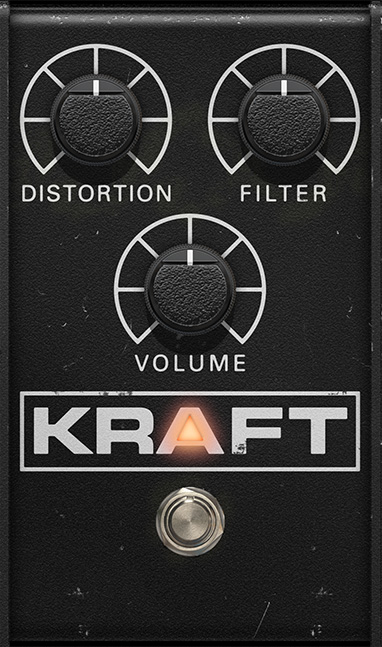
An overdrive/fuzz/distortion pedal masterpiece. Probably featured on more of your favorite recordings than you realize, and that is almost regardless of music genre.
The Kraft pedal transitions easily between warm, tempered overdrive to heaving chunks of heavy gain all around. Thanks to its renowned tone filter the output signal never lacks “muscle” or body and the pedal works just as well for bass as it does for guitar.
Whatever you are looking for in the gain, fuzz and/or distortion department, this is a good place to start your search at.
Softube Trollegater noise gate

Stacking up a load of pedals, especially those that add some kind of distortion, may result in a huge amount of noise building up. A noise gate can come in handy if noise becomes a problem.
One method is to put the gate last in the chain. That way, you will get rid of all unwanted hiss and rumble from your rig. However, if you use delay and reverb effects after overdrive and distortion pedals, the noise gate may cut off the tails of those effects. You could then try placing the gate before echo and reverb.
The Trollegater will always do its best to assist you in removing noise while preserving the music, but you must give it a little help. Start by turning the Threshold knob all the way to the left. With your instrument connected and all effects on but no music playing, listen closely to the noise. Increase the Threshold knob until the noise disappears. This is your correct setting!
Trollegater (transl.: Troll + gata = troll street) is a nature reserve outside Linköping with one of Sweden's largest natural cave systems.
American Class A 25 compressor
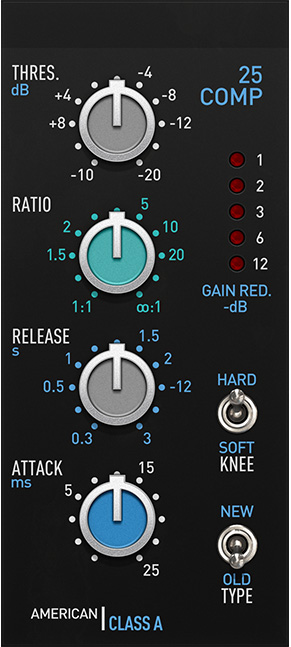
This unit is based on Softube’s take on the greatest classics of American mixing console hardware – a compressor with a famously punchy sound.
Apart from the standard compressor controls, American Class A also features a switch which allows you to choose between a feed forward or a feedback style of compressor. The feed forward (Type = New) is controlled and predictable, while the classic feedback mode (Type = Old) is more punchy.
A Hard Knee has a sharper transition between compressing and non-compressing states. A Soft Knee offers a more gradual transition, where the ratio gradually increases around the threshold. For most applications, Soft Knee is where you want to set it.
The Attack can be set between 1 and 25 milliseconds and the Release from 0.3 to 3 seconds. The Ratio knob sets the ratio which, in general, is often less than what the panel says. Threshold is adjustable from +10 to –20 dBu.
The Gain Reduction meter shows you how much the compressor squishes the sound.
You can either place it as a pedal style compressor in front of an amp, or you can use it as a mixing tool at the end of the signal chain. When using it as a mixing tool, we recommend that you listen to your guitars together with the rest of the mix. You will come a long way with just a touch of compression.
American Class A 55 EQ
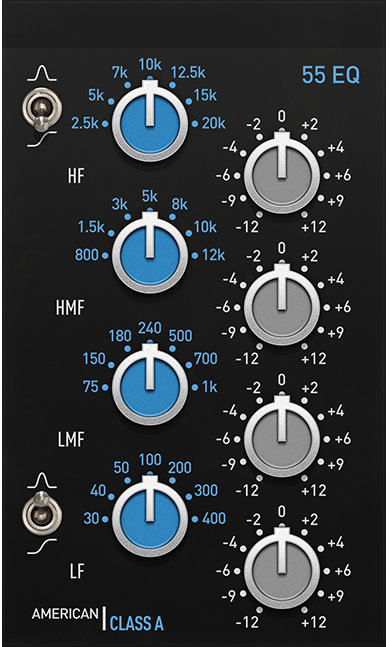
This EQ is based on a classic console equalizer that made it into a four-band 1U mastering equalizer, a Softube Console 1 strip, and now finally turns up inside Amp Room! This EQ is rock music. The weight of the mids are legendary and the punch of the low end can be heard on countless albums.
The four EQ bands each have 7 center frequencies. The Gain knobs are divided into 11 steps, ranging from –12 to +12 dB.
Both the high and the low filter can be switched between Shelving or Bell filters.
You can either use it as a pedal style EQ in front of an amp, or as a mixing tool to sculpt the output of Amp Room. Anything goes!
The Gain Reduction meter shows you how much the compressor squishes the sound.
Room Ambience RoomIR

If you connect an instrument to your sound card and run the signal through Amp Room while using headphones, you will hear a completely dry signal.
With this effect somewhere near the end of your signal chain, you can add some natural room ambience.
Five room impulse responses are available. All of them have Near and Far faders, plus you can choose to delay the Near response with a pre-set predelay time to achieve a great slap-back effect. The two Pan knobs lets you spread out the room impulses in the stereo field.
Room info:
Note: The output of this effect is in stereo. To hear the full stereo sound, you may have to switch the track in your DAW to stereo.
Patrik Jensen – Product Owner
Johan Toverland – Project Management
Stefan Aronsson – Product Marketing
Kim Larsson, Mattias Flygare, Fredrik Jansson, Anton Eriksson and Niklas Odelhom – DSP modeling
Pelle Serander, Patrik Holmström and Arvid Johnsson – Framework programming
Björn Rödseth – DSP backend programming
Niklas Odelholm – General graphic design
Ulf Ekelöf, Thomas Merkle, Nis Wegmann and Manuel Colom – Graphic design
Stefan Aronsson and Patrik Jensen – Presets
Emanuel Enbäre and Niels Nielsen– Quality assurance
Thank you to: Daniel Bergstrand @ SDFX, Kristian Kohle @ Kohlekeller Studio, Thomas Plec Johansson @ The Panic Room, David Castillo @ Studio Gröndal, Tue Madsen @ Antfarm Studio, Vilma Colling @ Riksmixningsverket, Jacek @ Bogren Digital, David Gnozzi @ MixbusTv, Monte Pittman and Mikael Almgren.